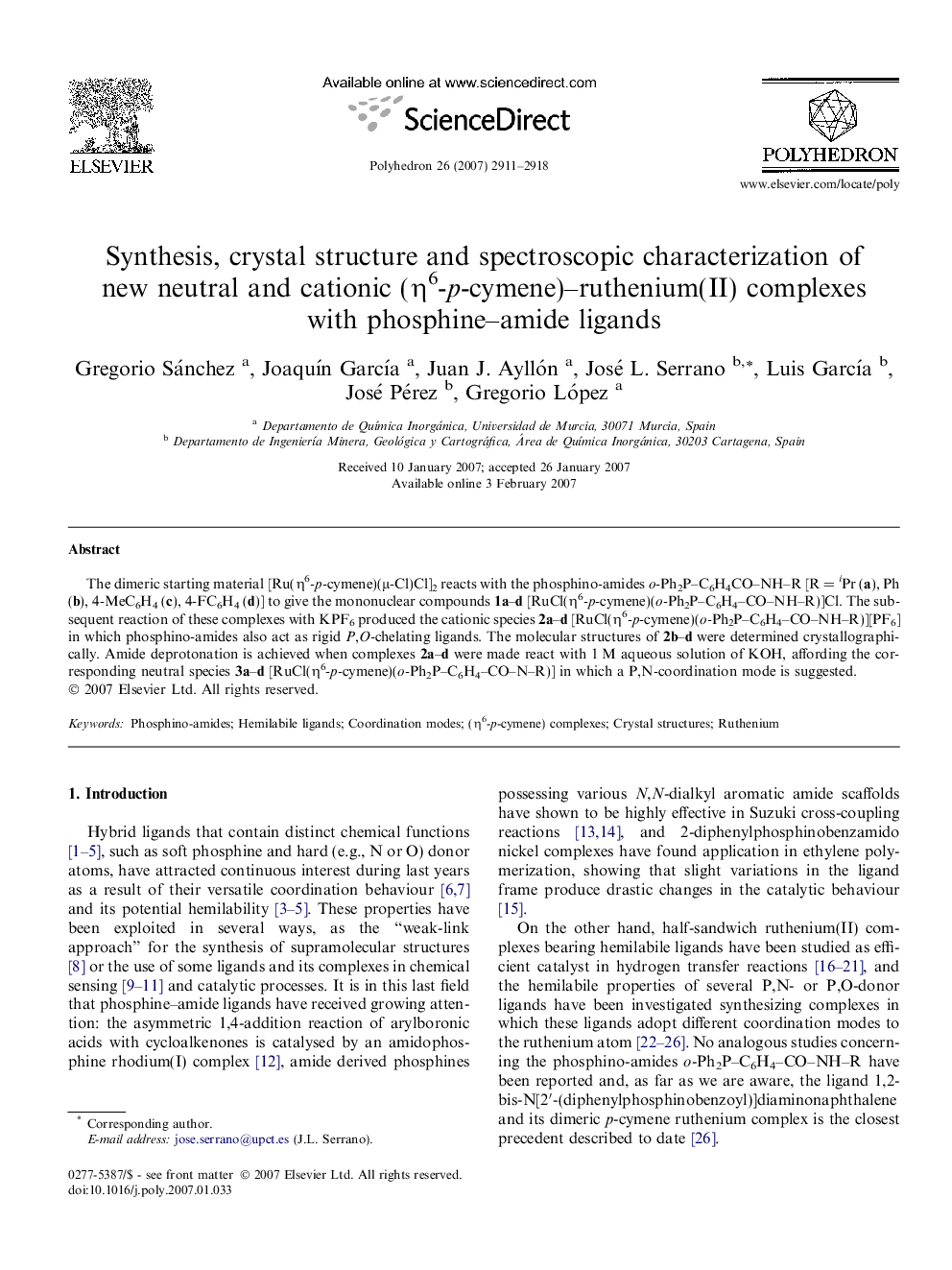| کد مقاله | کد نشریه | سال انتشار | مقاله انگلیسی | نسخه تمام متن |
|---|---|---|---|---|
| 1339855 | 979715 | 2007 | 8 صفحه PDF | دانلود رایگان |

The dimeric starting material [Ru(η6-p-cymene)(μ-Cl)Cl]2 reacts with the phosphino-amides o-Ph2P–C6H4CO–NH–R [R = iPr (a), Ph (b), 4-MeC6H4 (c), 4-FC6H4 (d)] to give the mononuclear compounds 1a–d [RuCl(η6-p-cymene)(o-Ph2P–C6H4–CO–NH–R)]Cl. The subsequent reaction of these complexes with KPF6 produced the cationic species 2a–d [RuCl(η6-p-cymene)(o-Ph2P–C6H4–CO–NH–R)][PF6] in which phosphino-amides also act as rigid P,O-chelating ligands. The molecular structures of 2b–d were determined crystallographically. Amide deprotonation is achieved when complexes 2a–d were made react with 1 M aqueous solution of KOH, affording the corresponding neutral species 3a–d [RuCl(η6-p-cymene)(o-Ph2P–C6H4–CO–N–R)] in which a P,N-coordination mode is suggested.
The coordination properties of phosphino-amide ligands o-Ph2PC6H4CONHR [R = iPr (a), Ph (b), 4-MeC6H4 (c), 4-FC6H4 (d)] have been studied by synthesizing and characterizing several (η6-p-cymene)–ruthenium(II) complexes in which P,N- or P,O-bidentate coordination modes are displayed. The strong P,O-chelating ability towards ruthenium shown by these ligands prevent the preparation of complexes with ligands acting as P-monodentate and any hemilabile behaviour. The crystal structures of three new complexes have been determined.Figure optionsDownload as PowerPoint slide
Journal: Polyhedron - Volume 26, Issue 12, 23 July 2007, Pages 2911–2918